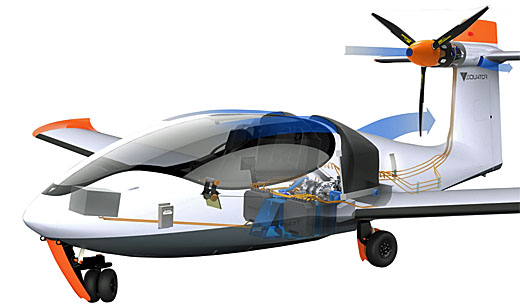
This article has been updated with a new image; a minor correction was made. LSA seaplanes have provided some of the most interesting new developments in aviation. Perhaps interest stems from the vast numbers of landable waterways compared to runways. Perhaps it’s the versatility of amphibians. Maybe people are simple drawn by the good looks or unique qualities of entries. Among the several projects, one of the most fascinating has been the hybrid electric seaplane called Equator P2 Xcursion, from Norway. I have reported on P2 Xcursion before; here’s the earlier article. Years in the Making CEO and lead designer Tomas Brødreskift reports the company has invested some 30,000 man-hours into the Equator Aircraft project. An engineer, private pilot, and recreational flying enthusiast, he acquired a passion for flying that most readers know well. Like many of them, he saw in the aircraft he was flying a lack of modern design.


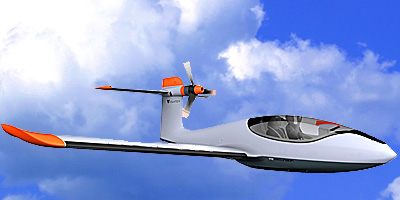 LSA seaplanes have provided some of the most interesting new developments in aviation. Perhaps interest stems from the vast numbers of landable waterways compared to runways. Perhaps it's the versatility of amphibians. Maybe people are simple drawn by the good looks or unique qualities of entries.
Among the several projects, one of the most fascinating has been the hybrid electric seaplane called Equator P2 Xcursion, from Norway. I have reported on P2 Xcursion before;
LSA seaplanes have provided some of the most interesting new developments in aviation. Perhaps interest stems from the vast numbers of landable waterways compared to runways. Perhaps it's the versatility of amphibians. Maybe people are simple drawn by the good looks or unique qualities of entries.
Among the several projects, one of the most fascinating has been the hybrid electric seaplane called Equator P2 Xcursion, from Norway. I have reported on P2 Xcursion before; 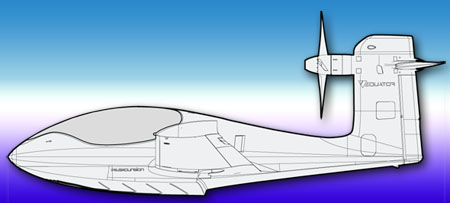 Part of the innovation Tomas introduced is a novel hybrid propulsion system to provide range, fuel efficiency and redundancy with all the benefits of electric power. With a purpose-designed control management system, the total pilot workload is reduced and higher levels of security are achieved, he believes.
Part of the innovation Tomas introduced is a novel hybrid propulsion system to provide range, fuel efficiency and redundancy with all the benefits of electric power. With a purpose-designed control management system, the total pilot workload is reduced and higher levels of security are achieved, he believes.
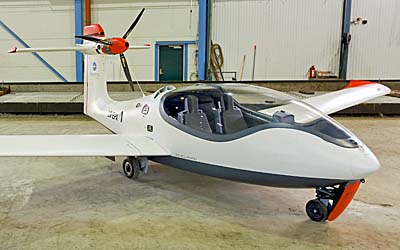 Further innovation is a fly-by-wire rudder and drive-by-wire nosewheel. "Both are experimental technologies, Tomas explained, "that we believe may make it simpler for the prospective owner and pilot to learn how to fly. No more hand and foot coordination, here you can put your feet up high and use your hands only for all control inputs."
Further innovation is a fly-by-wire rudder and drive-by-wire nosewheel. "Both are experimental technologies, Tomas explained, "that we believe may make it simpler for the prospective owner and pilot to learn how to fly. No more hand and foot coordination, here you can put your feet up high and use your hands only for all control inputs."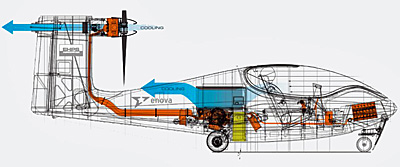 P2 Xcursion's thrust is provided by an unusual aviation powerplant involving three elements: a motor spinning the prop; an electric generator supplying the motor and batteries; and an internal combustion engine powering the generator. At this time, P2 has both a test and boost battery plus it has the required electronic control unit (ECU).
P2 Xcursion's thrust is provided by an unusual aviation powerplant involving three elements: a motor spinning the prop; an electric generator supplying the motor and batteries; and an internal combustion engine powering the generator. At this time, P2 has both a test and boost battery plus it has the required electronic control unit (ECU).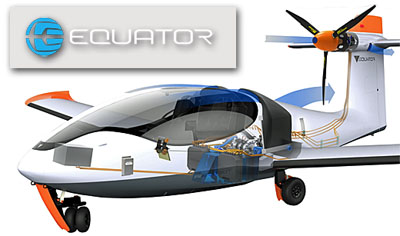
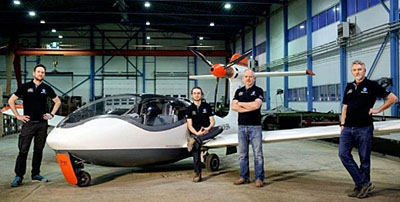 As a sum, the three elements weigh 233 pounds, roughly the weight of a legacy 100 horsepower aviation powerplant.
Batteries and controllers add to the weight, perhaps explaining the gross weight of 750 kilograms or 1,653 pounds. This weight and electric propulsion would eliminate P2 Xcursion except FAA is presently considering both electric power and a different way to calculate gross weight that would disregard the current 1,430 pound (650 kg) LSA seaplane weight limit. See more on
As a sum, the three elements weigh 233 pounds, roughly the weight of a legacy 100 horsepower aviation powerplant.
Batteries and controllers add to the weight, perhaps explaining the gross weight of 750 kilograms or 1,653 pounds. This weight and electric propulsion would eliminate P2 Xcursion except FAA is presently considering both electric power and a different way to calculate gross weight that would disregard the current 1,430 pound (650 kg) LSA seaplane weight limit. See more on 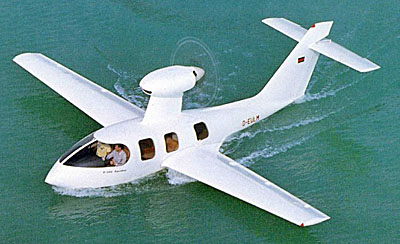 Many years later, Equator's P2 Xcursion first took flight in spring of 2018.
That accomplishment, while no doubt immensely satisfying, opened the next chapter: raising the money to go forward with the project.
"We are delighted and very proud to announce that Equator Aircraft AS has successfully achieved its Seedrs crowdfunding initial target investment," the company wrote. "The Equator team expresses a huge thank you to nearly 400 investors who share Equator's vision and have committed almost €160,000 (about $185,000) to date." While a tiny fraction of what Icon Aircraft has generated, this sum will evidently allow Tomas and team to proceed. You can help if you are so motivated using
Many years later, Equator's P2 Xcursion first took flight in spring of 2018.
That accomplishment, while no doubt immensely satisfying, opened the next chapter: raising the money to go forward with the project.
"We are delighted and very proud to announce that Equator Aircraft AS has successfully achieved its Seedrs crowdfunding initial target investment," the company wrote. "The Equator team expresses a huge thank you to nearly 400 investors who share Equator's vision and have committed almost €160,000 (about $185,000) to date." While a tiny fraction of what Icon Aircraft has generated, this sum will evidently allow Tomas and team to proceed. You can help if you are so motivated using